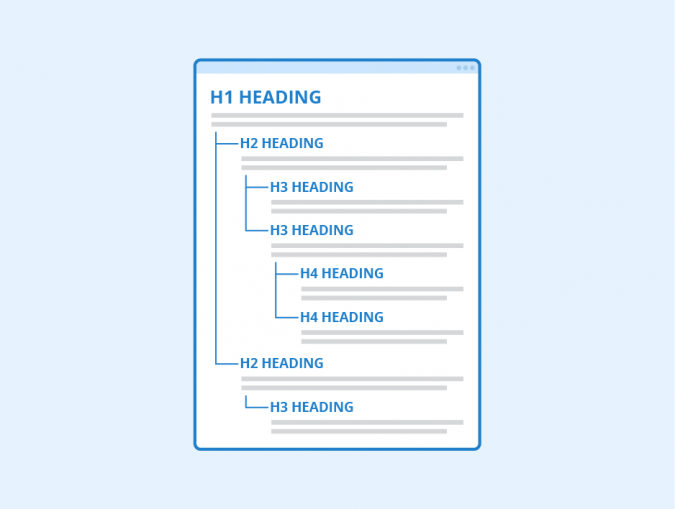How to Write a Blog Post: 10 Steps to write the article, rank on Google, get traffic and Wow your readers

If you are looking to learn how to write a blog post, you probably want to start your own blog, create a website or have already started a blog but lacking the skills to write a perfect article.
I’ve been writing blog posts since 2013 and that’s how I entered the digital economy. Starting a Blog on WordPress changed my life in many ways.
I’ve gained the skills to write SEO friendly skills that helped me get thousands of visitors to ClickDo blogs and build hundreds of blogs that make money online.
In the guide to how to make money blogging I show in detail how anyone can start blogging and earn online.
There are many guides on the web about how to write a post for your blog but non shows in videos how to write a post that will rank on search engines like Google.
What’s the point in writing a post that no one gets found on Google?
Your goal should be to get attention for your blog post so it helps many people and eventually could go viral.
I wrote the content for the SEO consultant webpage and the content score is over 90% according to the Cognitive SEO tool. And that’s why it ranks at top of Google for over 4 years not for the top keyword “seo consultant” in London, UK.
I will be giving some structured training and free access to the Online SEO training course and the blogging course is here to access for free.
If you haven’t yet started a blog yet, go register a domain name and get web hosting and learn how to start a blog as shown here.
So now you have a blog up and running, it’s time to do some keyword research and that’s shown on this blogging course.
Neil Franklin wrote about how to write the perfect blog post, so let me pull out some tips form it as that’s the best guide that covered about writing a post that passes the message to the reader.
What you must do first when writing a blog post?
Pick the topic
And the do the keyword research using a tool like Ahrefs or SEMRush. So, you know the topic you are covering has a demand on Google.
Going after a topic which has a historical search volume on Google is a good place to start with if you wish to get organic traffic to your blog post from Google.
Because what’s the point in writing if there isn’t anyone looking for it.
Using a tool helps you to do keyword research.
Watch the below video to learn how to do keyword research using Ahrefs and then write the blog post before publishing it the website with perfectly done on-page SEO.
Now you saw the core of my blogging approach but let’s look at the steps I follow when creating an amazing blog post that not only ranks on Google first page but also wow the readers.
10 Steps To Write The Perfect Blog Post And Wow Your Readers
Let’s start with Step 0: Know that Blogging Is a Serious Business.
Blogging isn’t easy. Not even if you have the most awesome writing skills. Those skills will come in handy, but there’s more to blogging than just writing well.

Source: https://www.pinterest.com/blogathon2/blogging-humour/
This Post Is For Serious Bloggers
If you want to simply create your own blog and keep writing there as and when the fancy strikes you – that’s one thing. If having readers is no concern of yours, then you can pretty much do exactly what you please on your own blog.
However, if you are more serious about blogging and want to write blog posts that will create, retain, and grow your readership – this piece is going to help you with some practical, tips that are totally doable.
If you are thinking of becoming a professional blogger, you’ll be happy that this post happened your way at just the right moment!
Step # 1: Read, Analyze, and Note Down
You may have been reading a range of blog posts for some time now, but you have to now do it with a different focus. You will now read blog posts for a few days with an analytical frame of mind.
That is more than being just an interested reader. You will actually have to watch yourself as you read. Analyze why you choose one blog post over another even when both are on the same topic. Which are the elements that determine your choice? Note them down.
This little exercise over 2-3 days will help you no end. Those elements you note down are all important tools to make your content awesome. Whatever it is that got you interested in a blog post or an article, you need to incorporate those in your own writing.
That X factor that wowed you in some and not in others – that’s what you need to get a grip on and reproduce.
And, remember: an immense range of topics gets covered in blog posts. Different genres have different intentions. The X factor varies accordingly.
What works for a post that intends to up the knowledge quotient may be completely different from what suits a post that informs you about the how-to of something.

Source: https://varnablogs.in/2005/07/02/blogger-humour/
Step # 2: Analyze Your Own Writing: Mark Your Own Cliches
Every writer has their own favorite phrases. They keep recurring, often unconsciously. You need to take note of your own preferred ones. That way, you will remain conscious of avoiding them when you write. You’ll remember to change them when you edit.
Why is that necessary? For two reasons. First, cliches are best avoided. Even your personal ones. Second, if you want to be a professional blogger, you’ll spend at least some time ghostwriting for others.
It’s not a good idea for readers to start wondering if the same writer has written x-y-z posts for A, B, and C blogs. Your clients won’t like it.
Step # 3: Do Your Own Research for Every Post You Write
Did you know good professors prepare for every class they take? No matter how long they have been teaching, and how well they know the subject. That is the difference between a good professor and one not as impressive.
That’s also the difference between a good blogger and an average one. Before you hit your keyboard to start writing, hit it to do some research on the topic you need to cover. If you’ve already written something on it, all the more reason to do some fresh research.
You need to find some new information to share, some new pitch for your writing.
There’s also a whole different side when you are researching to write as a blogger. You have to SEO-enable your post.
Search Engine Optimization – that’s what SEO means, as you probably know. In simpler language, it means making your content something that search engines like Google can track easily.
The aim: to feature on the first page of Google and other search engines. Preferably towards the top.
If you are honest with yourself, you already know why. When you search Google or any other search engine for something, how often do you go beyond the first page to check out the results?
And, how often do you already have enough information from the first few suggestions to not scan the others?
So, if you want to be read, you have to be visible. Prominently. One of the best ways of doing that is to rank high on what’s technically known as SERP. Search Engine Results Page.
So, what do you research about to make your blog SEO friendly? To start with, type out your content and click search. Look at the results on the first page.
Are there words that you find occurring in most of their titles? Or in that little bit that shows along with the title? There will be. You can be sure about that bit.
Note those words. They are obviously words that search engines pick up easily. You’ll have to weave those words in. In your writing. In your title, preferably.
Ever heard of keywords? You must have! These are the keywords. Words that easily and clearly indicate to search engines what your content is about.
Do be careful, however. Don’t overuse keywords. Google, in particular, can spot keyword stuffing, and punish such a practice. It will not pick up your content if it finds an overuse of keywords.
Google counts. It is the search engine giant, after all.

Source: https://www.betbev.com/news-posts/9-blogs-every-restaurant-owner-should-be-reading/
Step # 4: Get Your Outline Ready
This is more important than you might think. Whether you write for yourself, or as a ghostwriter, there will be a word limit. Suppose you just start writing, with no structure ready in your head.
You are very likely to be caught in one of the typical blogging blunders. You may write at a flow in the beginning and overshoot the word limit. Or realize after a while that you do not have words left to cover the remaining points that you need to.
You have two options at that point. You may barely touch the remaining points to stay within the word limits. That would imply an imbalanced blog post: detailed in the beginning and sketchy towards the end.
You’re least likely to want that lack of quality in your piece. So, you’ll choose the other option: ruthlessly edit what you have written.
Can you imagine the pain of that? First, you write. And then you have to painstakingly hack your own words away. Not because they aren’t good, but because you can’t afford to have those many words.
Doesn’t make sense, right? That’s why – get that outline ready.
Step # 5: Make Your Title Compelling
Now that all your preparations are done, you can start writing. But you’re writing to wow your readers. So, your title has to be catchy. Something that will grab your reader’s attention.
This is where all that analysis you had done of your own reading preferences will be of real help to you. As a thumb rule, however, words after which you’d usually put an exclamation mark are attention-grabbing words.
Let’s do a test right here:
Island Xxxx is a beautiful place to visit vs. Island Xxxx is one of the most amazing places you’re ever likely to experience!
Which one do you think will have a better grip on the reader? As a rule, interjective titles create curiosity.
There’s another side to it also, as in the case of your research as a blogger.
Your title is your all-important h1. Heading 1, that is.
If you’re used to working on Google docs, you may be thinking at this point that Title is different from Heading 1.
You’re right, of course. However, in the world of search engines – your title is your h1. This term simply means bigger than the rest.
If you notice the test options on a Google doc, you’ll find that the Title has the biggest font. Then the font size gets progressively smaller as you go down the list of Heading 1, Heading 2, etc.
So, make your title catchy for your readers. Make it SEO-friendly for yourself. Tough ask at the beginning, but you’ll soon get a hang of it.

Source: https://www.seobility.net/en/wiki/images/7/7d/H1-H6-headings.png
Step # 6: Structure Your Writing
There are some basic rules for writing blog posts. Those are mandatory – no escape.
- Keep your paragraphs short. A range of 40-50 words per paragraph is good to follow. Short paragraphs make it easier for readers to quickly glance through.
- Use headings and subheadings. Make them clear and catchy. These, too, are tools that will help your readers to quickly understand what all you’re covering in your post.
And for search engines to know what your content is.
- Match the tone of your writing with your topic. Your tone for writing about a natural disaster somewhere, and about a celebrity wedding cannot be the same, right?
Your tone also needs to match the genre. If you are writing as an expert on a topic like the national economy, you need to adopt a serious, knowledgeable tone.
If, on the other hand, you are writing about holidaying somewhere, you’re still the expert, Your tone needs to be conversational, though.
- Remember to throw in some humor, unless you are writing about something particularly tragic. Good humor never fails.
- Edit your post until you have eliminated all repetitions. Words, phrases, information – this need applies to all of them.

Source: https://www.incomediary.com/wp-content/uploads/2012/12/dilbert2007458220426.gif
Let’s get clear about one thing before we go on to the next step. Everything said so far applies for successful blogging, per se. Whether you write as a blogger yourself, or you ghostwrite for others.
Even if you start by writing blog posts for others, you need to apply these tips. That will make your blog posts great and attract more clients.
The remaining three steps are important only if you want to be a blogger yourself.
Step # 7: Choose A Good Domain Name
A domain name is the identity of your blogging site. Amazon.com, for instance. Or, neilpatel.com – to give you the example of the domain name of an immensely successful blogger.
Learn from that. Keep your domain name short and simple. None other than Google stresses that.
Make sure your domain name reflects what you are going to write about. Getting a domain with just your name may have to wait a while for you to become someone like Neil Patel.
Weave in a keyword and make the name brandable. Your domain name should create your brand image for your readers.
Step # 8: Pay Attention to Design
Remember that the visuals are as important as the writing. Design your blog, and your blog posts, with strong visuals to attract visitors. They need to visit first in order to become your readers.
Use photographs, infographics, cartoons, videos, and other visual elements as appropriate in your blog posts. However, don’t use them indiscriminately. Make sure that they add value to your writing.
Step # 9: Write about What Interests You
If you are writing for yourself, give yourself that freedom. To start with, at least. As you grow in stature, you may have to expand the universe you cover. You may even want to extend your thematic areas as you grow as a blogger.
However, to start with your areas of interest will give you an extra flair in your writing. And, there’s a niche market for EVERY good blog. It is a good business practice to grow your niche first and expand later.
Step # 10: Invite Discussion and Engage with Your Readers
This is where writing on a blog is very different from writing for a magazine. A blog can be interactive. That is a huge bonus when it comes to creating engagement.
A smart way of inviting discussions on your writing is to end your post with a question, or a thought-provoking comment. That would encourage your readers to comment on your post.
Make sure you engage with them. Respond to comments. Invite them to read your next post on the topic. Endear yourself to your readers. They will be your unpaid brand ambassadors!
So…
Like I said, it’s not easy. The effort is worth it, because it’s going to make you think straighter, articulate better, create something more meaningful, and as a result, get you the traffic you desire.

